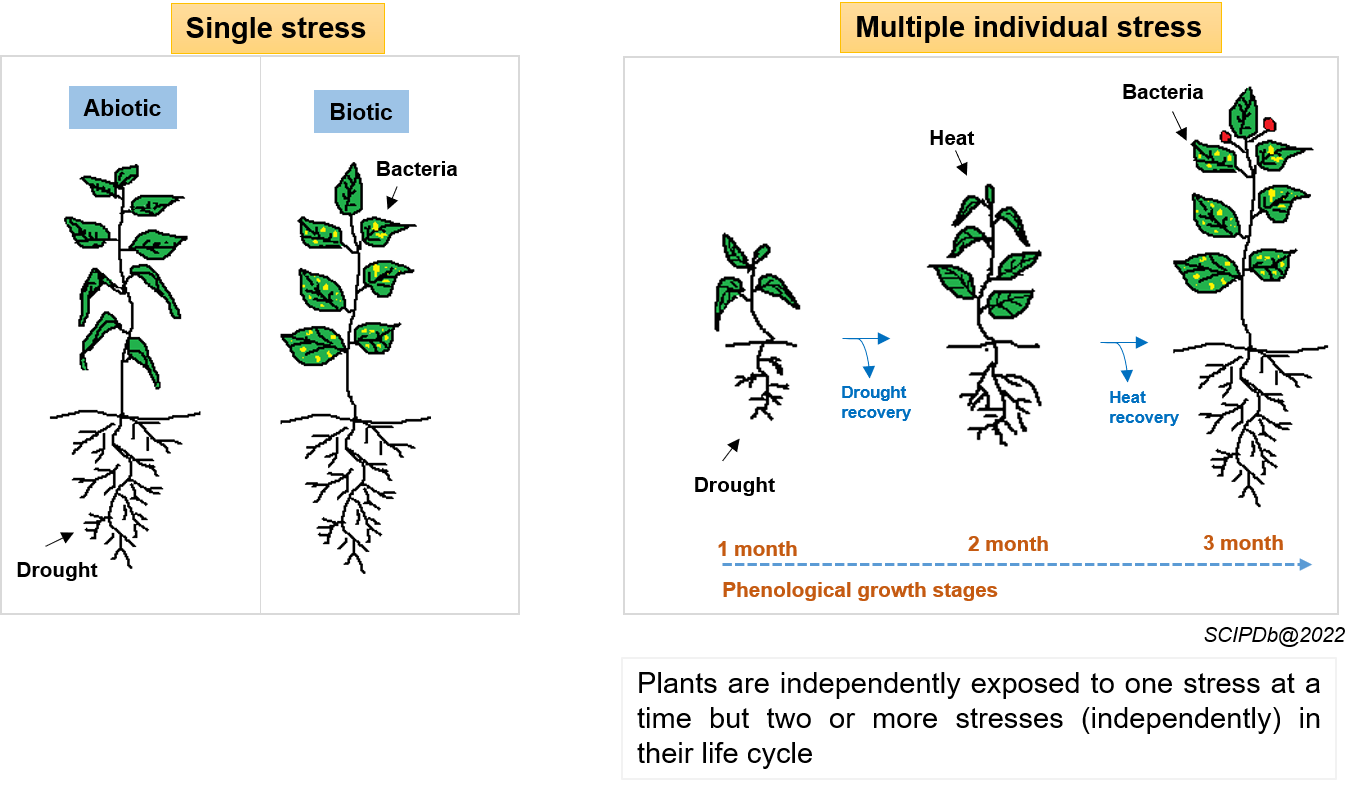
Plants are independently exposed to one stress at a time but two or more stresses (independently) in their life cycle
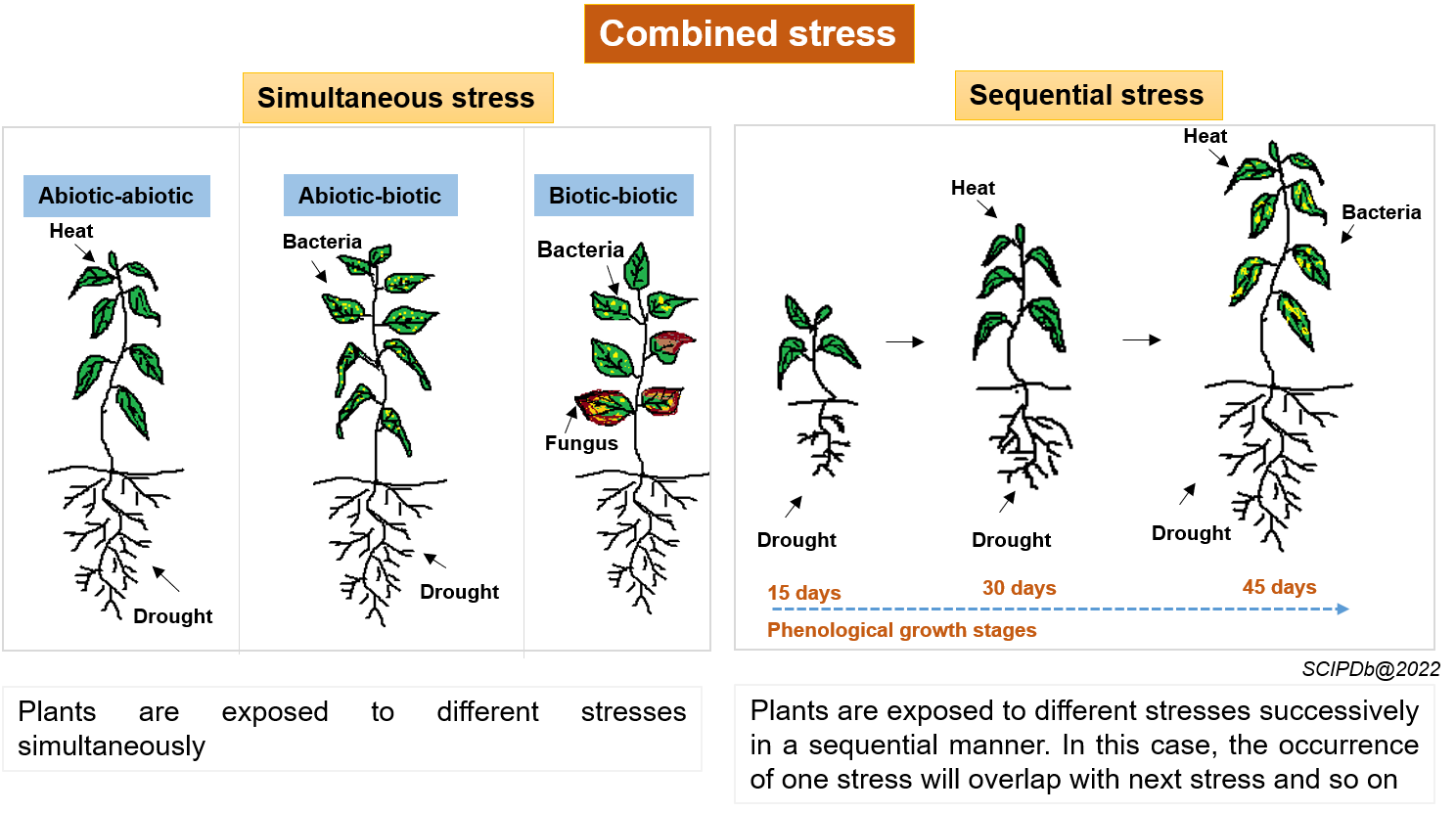
1) Stress combinations are common, individual occurrence in isolation is rare
2) Can affect plant growth either positively or negatively, but in most cases act negatively
2) Can affect plant growth either positively or negatively, but in most cases act negatively
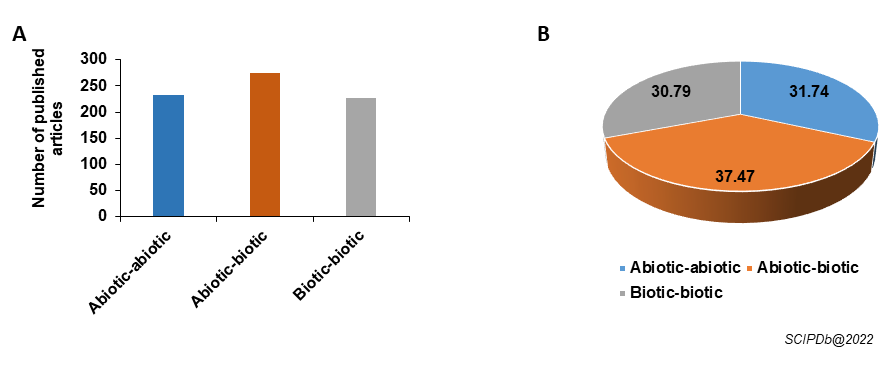
A) Graph shows total number of research articles published in different stress categories under combined stress
B) Pie diagram shows percent literature coverage in different stress categories under combined stress
B) Pie diagram shows percent literature coverage in different stress categories under combined stress
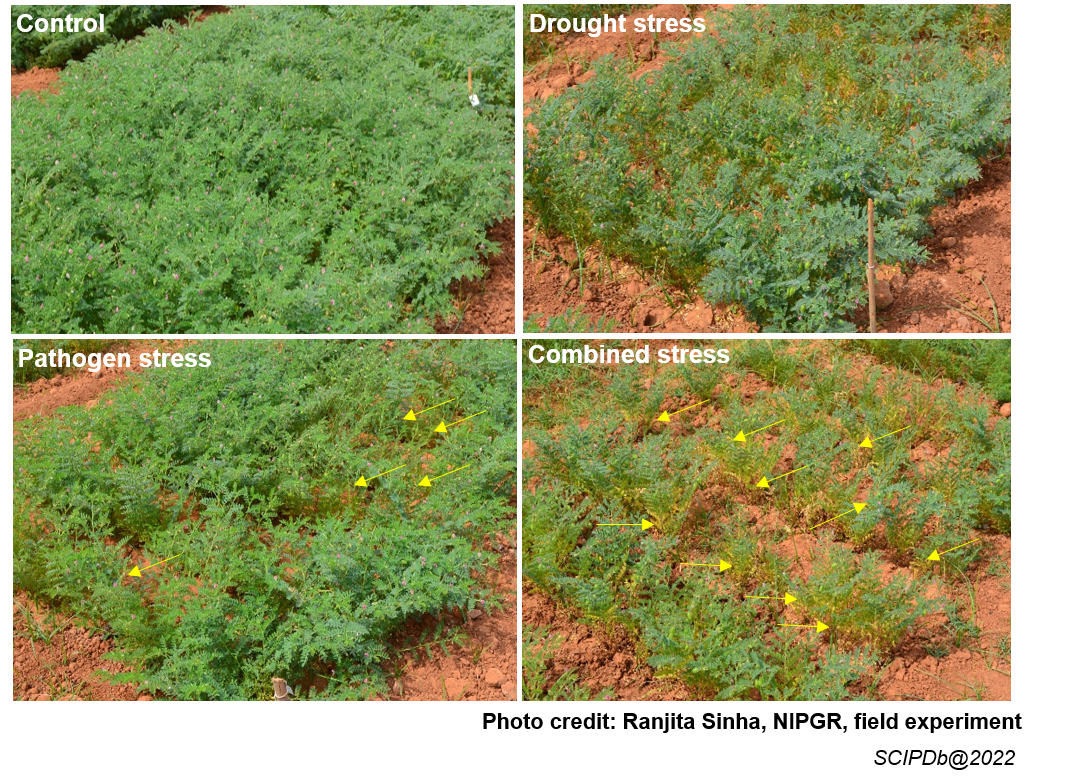
Photographs show increased susceptibility of chickpea plants to black root rot (Fusarium solani) under drought stress. Arrows indicate black root rot symptoms on plants
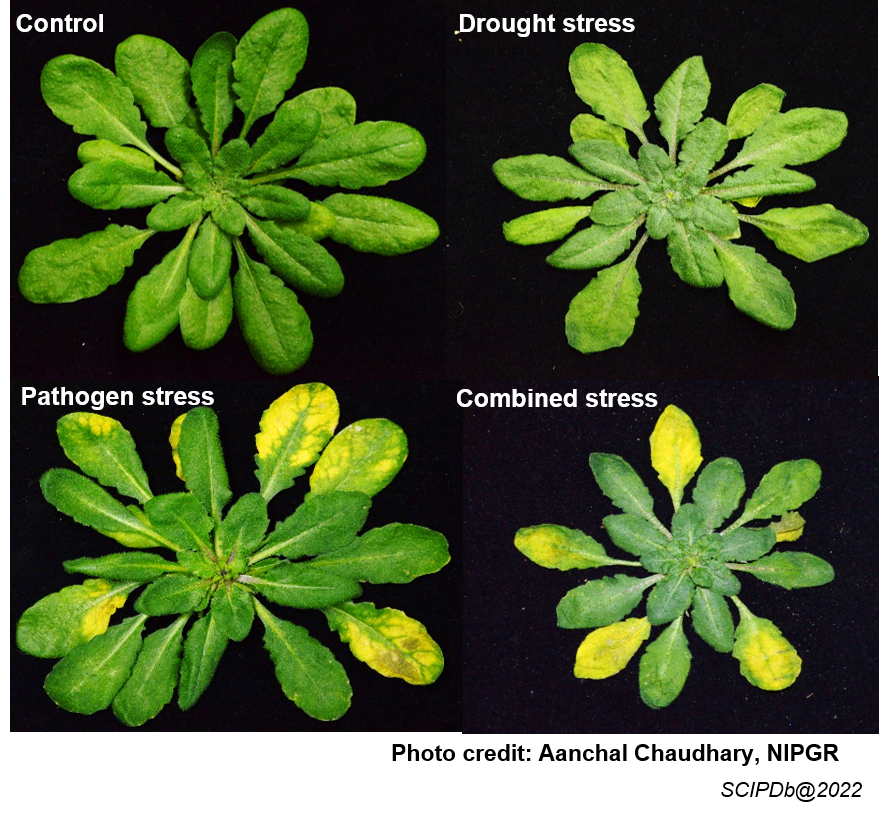
Arabidopsis plants show reduced growth and more chlorotic leaves under combined drought (40% field capacity) and pathogen (Pseudomonas syringae pv. tomato DC3000) stress compared to individual drought or pathogen stress
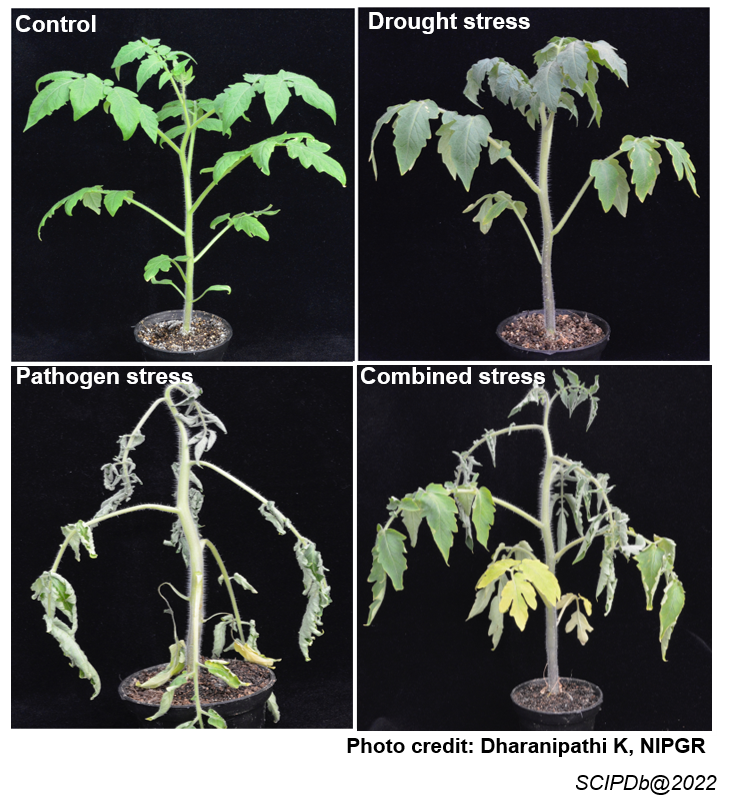
Tomato (Solanum lycopersicum) plants show less wilting symptoms under combined drought (40% field capacity) and xylem invading bacterial pathogen (Ralstonia solanacearum) stress compared to individual pathogen stress.
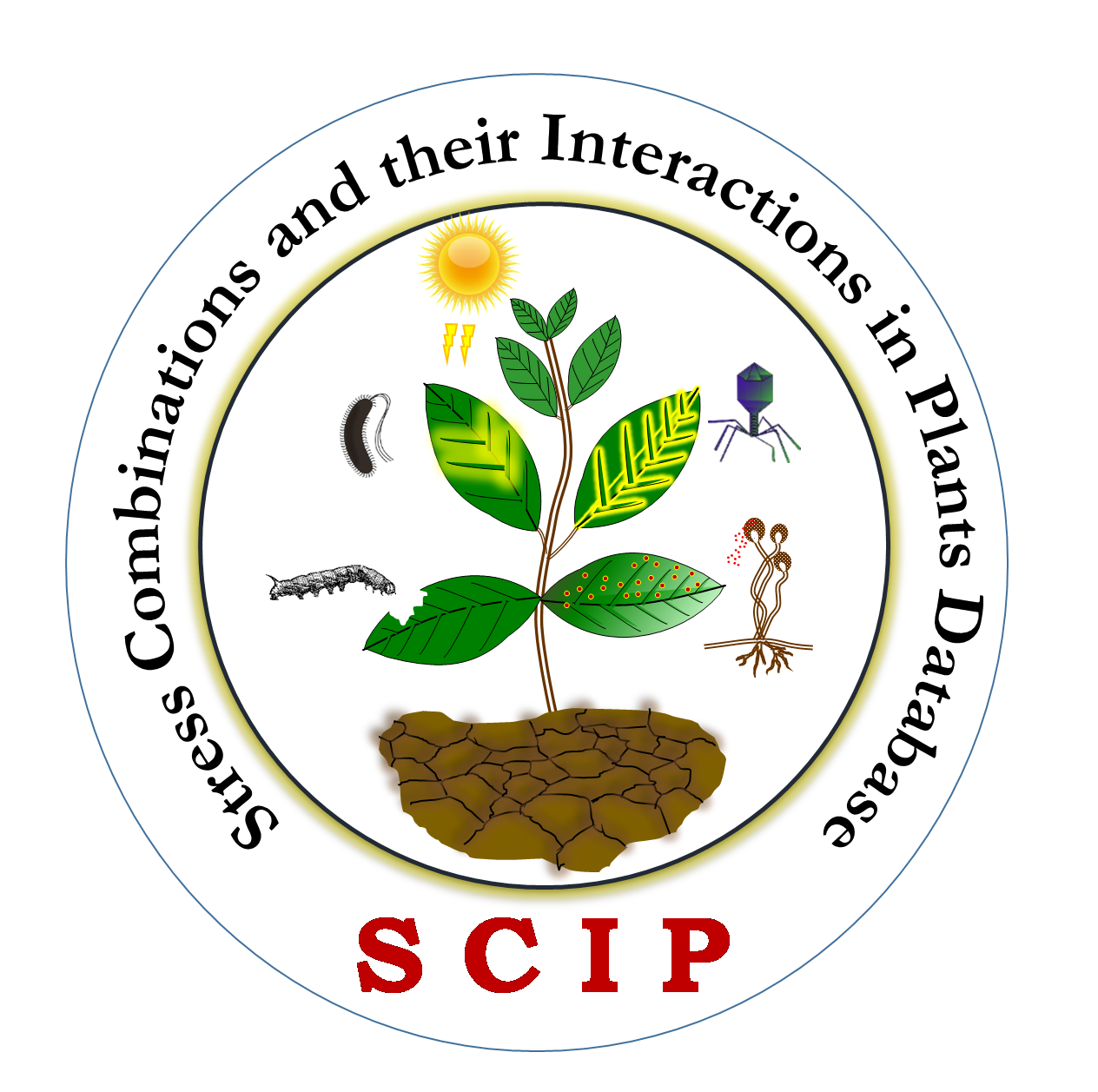

Under natural conditions, plants are exposed to a wide range of abiotic and biotic stress combinations, affecting their growth and yield. In most cases, the simultaneous or sequential occurrence of two different type of combined stresses affects a plant’s performance more severely than single stresses. For example, a combination of drought and heat stress caused more significant damage worth $200 billion to US agriculture than the $50 billion loss caused by drought alone (Mittler 2006; Suzuki et al. 2014, Rivero et al, 2021, Zandalinas and Mittler 2022). Moreover, co-occurring abiotic stress can predispose a plant to several pathogens ( Sinha et al. 2019, Bidzinski et al. 2016). Overall, plant's response to combined stress is fairly distinct from its response to individual stress (Pandey et al. 2015, 2017, Choudhary et al. 2017, Gupta et al., 2016, 2017 , Sinha et al. 2017, Zandalinas et al. 2022). For a specific stress combination, both positive and negative interactions have been reported in the literature (reviewed in Pandey et al. 2015, 2017, Szczepaniec and Finke 2019, Desaint et al. 2020). Many studies on the effect of different stress combinations on plants often report contradictory results. This is because the outcome of an interaction between the two stresses varies with the plant age, plant type, time of stress occurrence, stress severity, duration of each stress, order of stress perceived by the plants, and also on the type of stressors involved. Under combined stress conditions, plants exhibit shared and unique responses tailored for the particular stress combination. This results in a high degree of complexity in plant's responses and makes it difficult to predict the outcome of an interaction based on single stress studies. A significant number of research groups worldwide investigate the individual and combined stress interactions (Desaint et al. 2020; Atkinson et al., 2012; Atkinson et al. 2013; Prasch and Sonnewald, 2013; Suzuki et al. 2014, Pandey et al. 2015, 2017, Choudhary and Senthil-Kumar). Considerable information has been accumulated over the years documenting the effect of combined stresses on plants. However, despite the increasing scientific interest in the field and the amount of data published, our understanding of nature and the physiological consequences of the interaction between two or more stresses remains poor. Even the data available is scattered and lacks systematic comparison. Moreover, the complexity of the plant's response makes it difficult to draw definitive conclusions out of the available data. To gain a deeper insight into the complexity of plant's response to combined stress, available literature information needs to be compiled and comprehensively analyzed. The current database provides exhaustive information on the available literature on different forms of combined stresses (simultaneous and sequential). In this database, we attempt to summarize the current knowledge and provide an update on recent findings, focusing on the morpho-physiological (phenome) and molecular (transcriptome) responses of the plant to a combination of different stresses and also for the individual stresses. The database would provide a powerful resource to analyze and compare plant responses during multifactorial stress and identify common and specific responses to different stress combinations. Manual curation is considered the gold standard for creating accurate and efficient biological databases, and SCIPDb is a prime example of its benefits (this foundation laid is now ready for intervention of AI and ML-based tools and that is our future plan). The database includes high-quality information from almost 123 different stress combinations, meticulously curated from over 1000 peer-reviewed papers by experienced experts. These experts conducted extensive literature searches to gather, curate, normalize, interpret, and integrate combined stress datasets from relevant articles, resulting in precise and high-quality data. Through SCIPDb, we aim to provide transparent data for trustworthy research. We have prioritized quality over quantity in the context of plant stress biology, which is why SCIPDb relied on manual curation. The database is designed to be transparent, with every data point traceable to its source and the data processing carefully documented. The sources of data used to create SCIPDb include peer-reviewed papers, which are accessible to users and can be used as preferred. The genesis of SCIPDb dates back eight years when our lab recognized the need for a combined stress database that could provide multifarious information to researchers and easily interpretable combined stress datasets. Our research focuses on understanding stress interaction and combined stresses in plants and their specific defense responses against various pathogens. The development, design, and structure of SCIPDb have involved the expertise of multiple PhD-level experts, as well as training for graduate and post-graduate trainees to carry out tasks efficiently and accurately. In future, we aim towards adding several other novel features like, automation of various visualizations hosted, prediction modeling of dataset hosted using machine learning like artifical neural networks (ANN) and meteorological data integration with geographical distribution information.